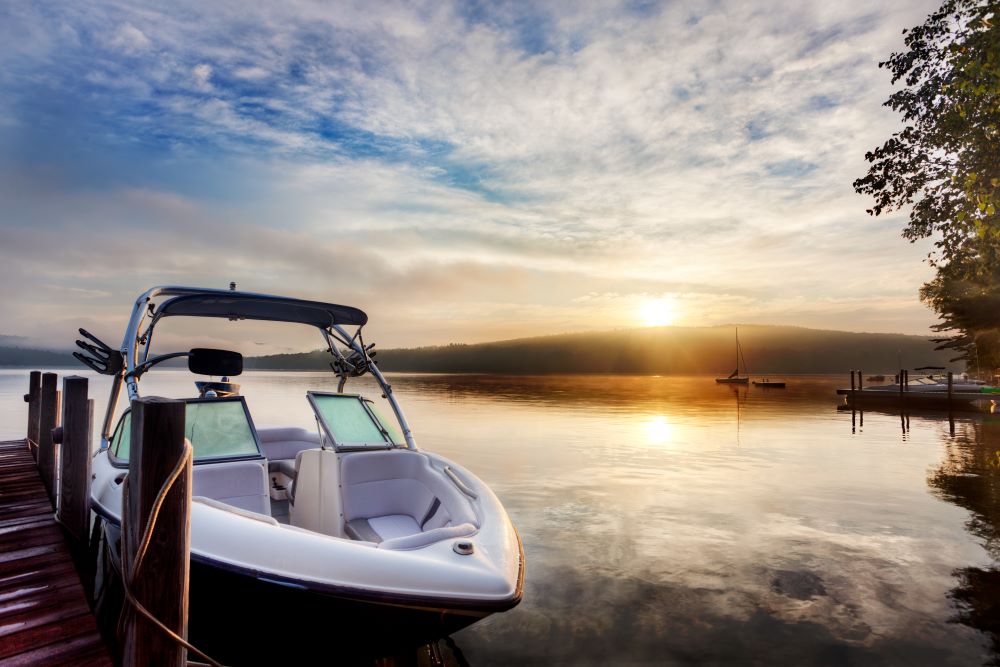
How to Dock a Boat
Are you nervous about docking your boat in a marina with dozens of boaters watching? Do you just want to learn how to dock your new boat without damaging it?
Regardless of what your reasons are for wanting to learn how to dock a boat, simply follow the 4-step docking procedure outlined in this article. Not only will you learn how to dock like a pro, but you’ll also find additional tips for docking your boat safely in high winds.
4-step docking procedure
1 – Approach slowly
Regardless of whether you’re docking at a harbour, marina or just a private dock on a lake or river, slow down as you approach. This is particularly important in busy areas like marinas, where the waves caused by higher speeds may disrupt other boaters.
Make sure that the side of the boat that will be up against the pier or wharf has fenders and rope attached to the cleats or rudder stock.
To facilitate the maneuver and prevent the boat from hitting the dock, have a crew member with a boat hook stationed at the side of your vessel to grab onto the dock or push it away if necessary.
2 – Approach from the right angle
In order to dock successfully, you need to approach from the right angle. Reduce your speed as much as you can and point the bow of the boat towards your chosen docking point.
The ideal angle of approach is around 30 degrees. Avoid approaching parallel or perpendicular to the dock, which will make the maneuver more difficult.
When your boat is within 10 metres of your docking point, shift into neutral and let your momentum carry you to the dock. At that point, if you know that the water is very shallow at your docking point and you are using an outboard motor, you can tilt it to avoid damaging the skeg and propeller.
3 – Touch the dock gently
Just before your pleasure craft touches the dock, turn its steering wheel or tiller so that the boat is positioned parallel to the dock.
If your boat stops a little far away from the dock, restart the motor for a moment (at low speed) until you reach the dock. Conversely, if your boat is approaching the dock too fast, you can put it in reverse for a moment to help you slow down and avoid hitting the dock. If you are in a small boat (rowboat or fishing boat) that has oars on board, you can use them to correct your course once you are near the dock.
Generally, if you have reduced your speed enough and used the right angle of approach, this step should go off without a hitch. That being said, don’t hesitate to reverse and try again with a better angle and speed rather than risk damaging your vessel.
4 – Secure your boat to the dock
Once your approach is complete and your boat is stationary, tie the mooring ropes at the bow and stern of your boat to the cleats on the dock.
Make sure your knots are tight to avoid any unpleasant surprises.
Docking in challenging wind conditions
Docking in a strong headwind or tailwind
If you have to dock your boat in a strong headwind or tailwind, you will need to adjust your speed and angle of approach accordingly.
For example, if you are facing a strong headwind, you may need to approach the dock more quickly. Conversely, if a tailwind is pushing you forward, don’t hesitate to cut the motor earlier than usual to avoid approaching with too much momentum.
Whether you are navigating a headwind or tailwind, we recommend approaching the dock at a narrower angle than usual, i.e. less than 30 degrees.
Docking when strong winds are pushing your boat away from the dock
If the wind is pushing your boat away when you try to dock, you need to adjust your angle of approach.
Make your approach at a wider angle than usual, i.e. more than 30 degrees. In such conditions, a boat hook can also help you grab hold of the dock so you can moor your vessel.
Docking when strong winds are pushing your boat towards the dock
When docking, beware of strong winds pushing your boat towards the dock. They may cause you to hit the dock and damage your vessel.
When you near the dock, reduce your speed and point the bow towards the docking point as usual, then make your approach with an angle narrower than 30 degrees.
Then turn your boat so that it is parallel to the dock and stop further away than you usually would. Let the wind blow you the rest of the way to the dock.
The NBSS can give you the tools to become a capable boater
The prospect of docking a boat should not keep you from sleeping or enjoying your summer on the water. With the right technique, anyone can do it safely. Remember that in order to operate a boat in Canadian waters, you are legally required to have your Pleasure Craft Operator Card with you at all times. Get your boating license today if you haven’t already, and don’t hesitate to get your family and friends involved and make the most of our group discounts!
If you need more tips on boating safety or basic boating maneuvers, the National Boating Safety School is your best resource. Our boating safety course is a great tool for new boaters and more experienced hands who want to refresh their memory before taking the online boating license exam!

